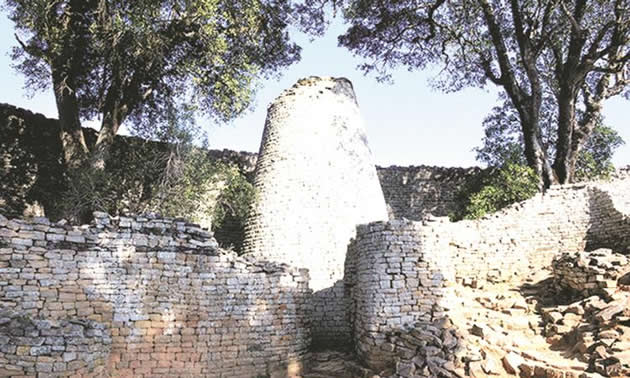Cultural sites need tourist marketing

Lovemore Chikova News Editor
The way China has organised its tourist attractions must be the envy of every country, especially fellow developing countries that are after the much-needed receipts from tourism.
African countries rich in cultural diversity like Zimbabwe can learn useful lessons from China on how to market their cultural heritage sites to attract more tourists.
After visiting a number of cultural villages in China, it became apparent that there is something being missed, especially in Zimbabwe, when it comes to cultural tourism.
In China, cultural tourism is big business, racking in millions of dollars every year to the fiscus.
This is because the Asian country has made deliberate efforts to emphasis on the cultural aspects of the local people as a tourist attraction.
The way China has organised its tourist attractions must be the envy of every country, especially fellow developing countries that are after the much-needed receipts from tourism.
The Asian country has been able to exploit its cultural heritage and turned it into a tourism product.
A case in point is the cultural village of the Li minority tribe in Hainan province, a tropical island in southern China.
A visit to this cultural village will leave one ruing the “opportunities” that those in the tourism industry are missing by not developing cultural tourism to the level that can attract tourists.
Although the Ministry of Tourism and Hospitality Industry has been encouraging cultural tourism, more action is needed to implement it.
The continued emphasis on developing tangible cultural heritage at the expense of intangible culture must change.
According to the United Nations Educational, Scientific and Cultural Organisation, tangible cultural heritage includes “buildings and historic places, monuments and artefacts which are considered worthy of preservation for the future”.
The UN agency describes intangible cultural heritage as “the practices, representations and expressions, as well as the associated knowledge and the necessary skills that communities, groups and in some cases individuals, recognise as part of their cultural heritage”.
Let’s take the Great Zimbabwe Monument, which consists of both tangible and intangible cultural heritage aspects.
Yet what is known most is the hill complex where the king lived, the great enclosure where his first wife lived and the valley complex where his other wives and villagers lived.
But there is more to it which is rarely exhibited to the tourist.
This was a vibrant traditional Shona cultural centre whose civilisation is comparable to other ancient cultures such as the Roman and Egyptian civilisations.
There has been little effort to develop a true cultural village depicting the way of life at the monuments.
This is in sharp contrast with the Li village in China mentioned above.
This village is all about the intangible cultural heritage of the Li people and a reconstruction of the ways of life of the tribe. After a tour of the village situated on a hill, one is made to watch a drama depicting the Li people’s culture.
During the drama, performed by more than 50 actors, one gets to know about courtship, marriage and wedding in the Li culture.
The actors depict other traditional facets of life of the Li people such as fishing, farming, hunting, harvesting rites, weaving baskets, weaving silk material, making a fire by rubbing logs and palm harvesting.
They enlist pigs, goats, ducks and cattle as part of the drama, in an effort to leave the tourist with a complete understanding of the traditional way of life.
Just imagine the value that could have been added to the Great Zimbabwe monuments if such a cultural depiction was being done.
The cultural village at Great Zimbabwe is far from showcasing life at the monuments.
It should be expanded to cover all aspects of the traditional ways of life practiced there.
In 2013, National Museums and Monuments of Zimbabwe director Dr Godfrey Mahachi expressed worry at the poor state of the cultural village.
This was because there is not much of the Shona culture being exhibited at the village, except for a few huts and a traditional dance group.
The museum at the monument gives some information, but many tourists would marvel more at the actual depiction of the way of life.
It is important that the village be improved to reflect the various cultural aspects of the communities which once inhabited the Great Zimbabwe centuries ago.
Dr Mahachi was quoted as saying: “Obviously, we are not very happy with the state of the Shona village at Great Zimbabwe monuments because we feel its state is not up to the desire standard.
“We want to see the village as a true reflection of what life used to be like at Great Zimbabwe in the past.”
Together with the Ministry of Tourism and Hospitality Industry, Dr Mahachi should treat the case as urgent. Apart from the stone structure, there is really nothing to depict to the tourist the actual way of life of the inhabitants of this beautiful place.
When Communist Party of China and Central Committee publicity head Mr Liu Yunshan visited the Great Zimbabwe in 2011, he remarked that the monuments were an indication that the country had a great civilisation.
He should have noticed the lack of other ways of bringing out the way of life at the monuments.
At the Li village in Hainan, which is always thronged by tourists, one can learn a about the ways of life of the villagers, some weird, while others even common to those practiced at places like Great Zimbabwe.
The Li people used to grow ‘Shanlan” rice on dry soil and they lived in boat-shaped huts built by materials such as bamboo, timber, mud, hay, tree branches and thatch.
The tribe had a variety of musical instruments such as drums, copper gongs, leaves, grass and mouth bow, but the most interesting one was the nose flute.
The nose flute was played by the nose and produced a “soft and low melody”.
The Li people also practised fishing because of the abundant rivers and the long coastal line in the area and used bamboo-woven fish traps, baskets, hooks and nets.
Before they went hunting, just like they did before a fishing trip, a traditional ceremony was held.
Their hunting tools were bows and arrows and gun powder, and they used other methods like digging a trap, using a noose and placing a trigger to kill animals.
The Li people’s religion was mainly centred on ancestral worship, where the “Ancestor’s Ghost” was the most feared, hence people avoided speaking of any ancestor’s name least they provoked the ghost.
The tribe also had land gods such as the sun, stones, frogs, trees, thunder, fire, mountains, water, stove, deer, cattle sheep, turtle, fish and birds.
Cows occupied a central role in the Li people’s worship rites because they believed that they had souls just like humans.
In honour of the cow, the Li people held a cow festival day where they made cows drink a special wine to protect them and to bless an anticipated good harvest the following season.
Their marriage rites were similar to what is practiced in Zimbabwe, apart from that they maintained a typical monogamous patriarchal family.
People from a common dialect, ancestry and blood group could not marry each other, while a man was required to present betrothal gifts for both engagement and marriage.
When all this is put out in a drama, a tourist is easily persuaded to come have a tour of the village and watch the actors.








Comments